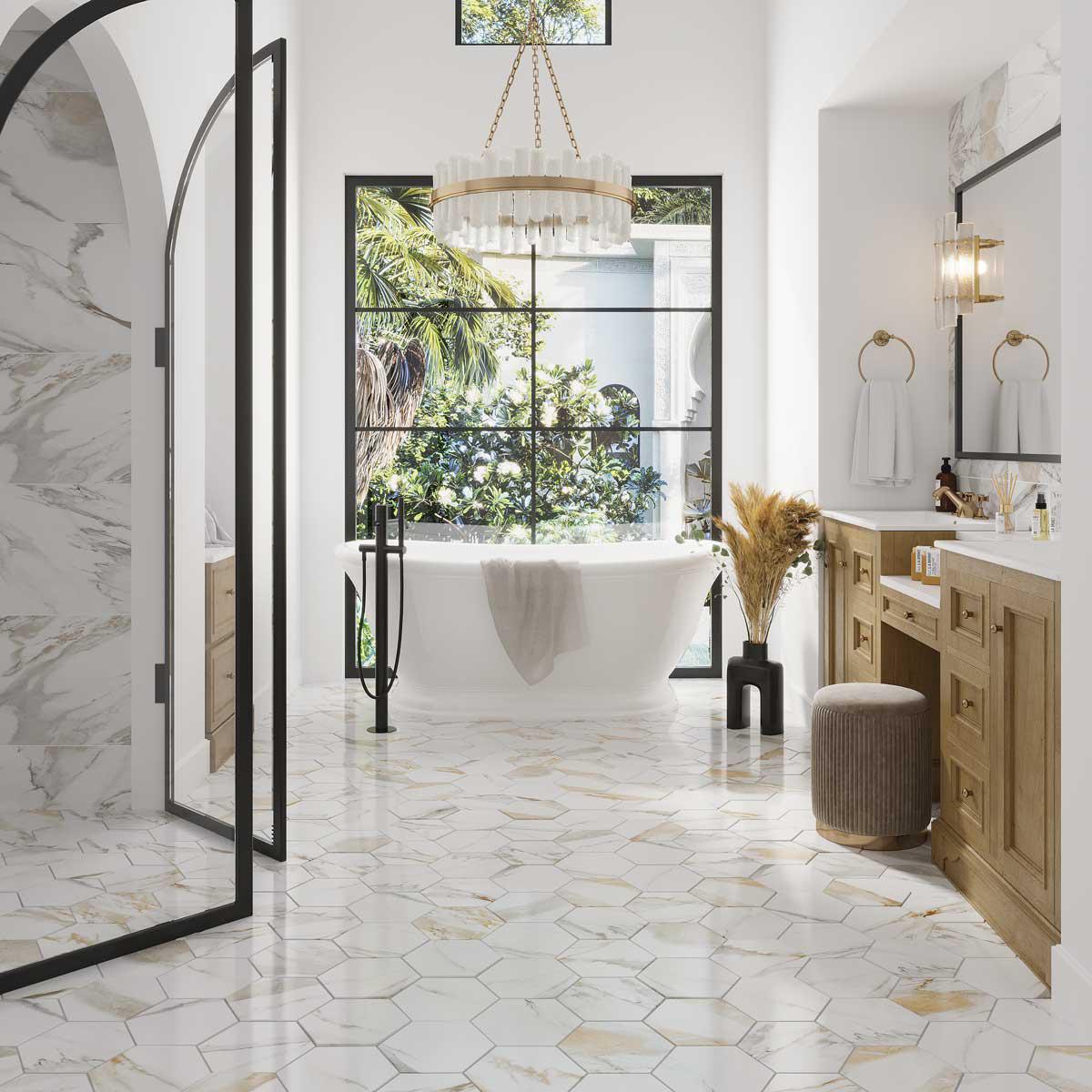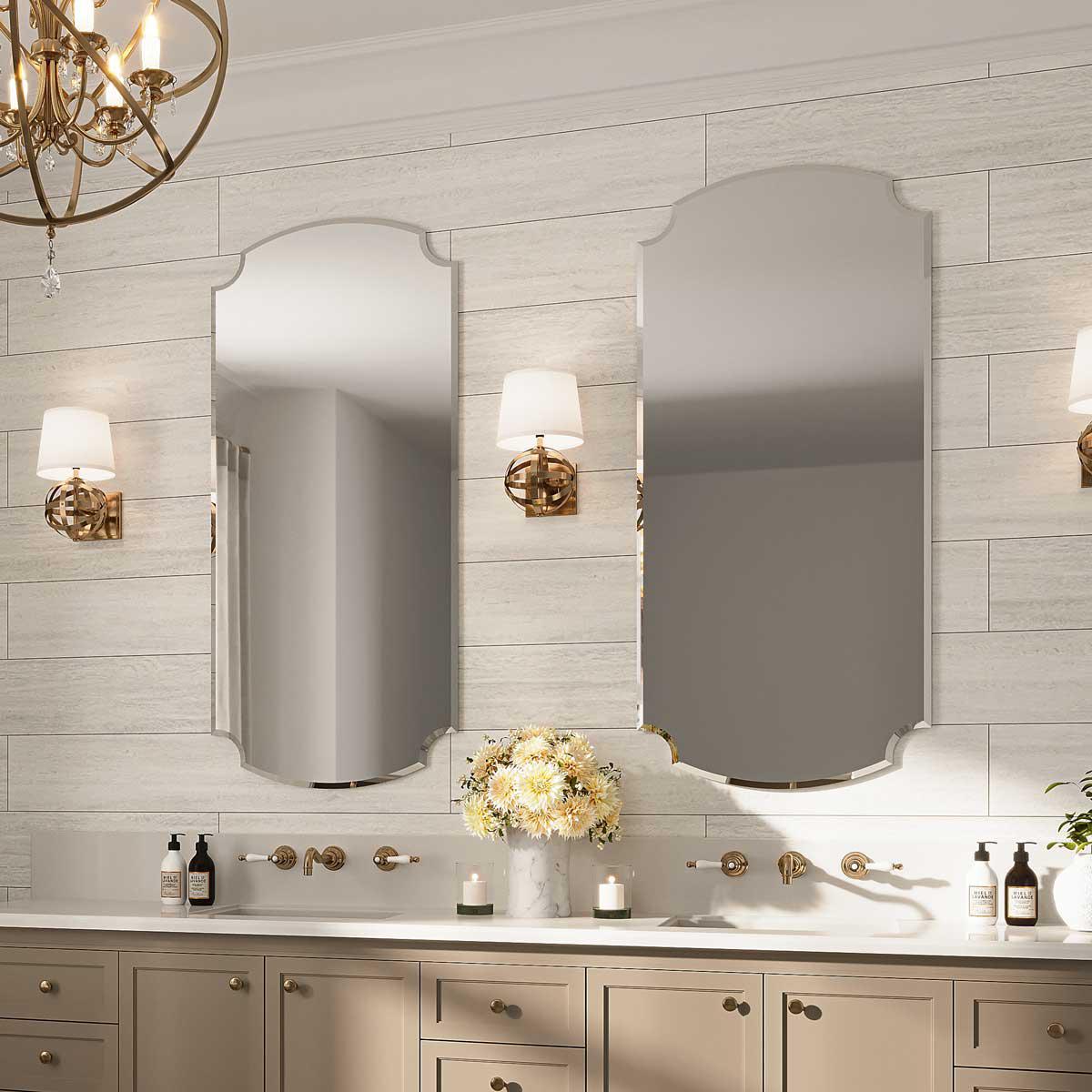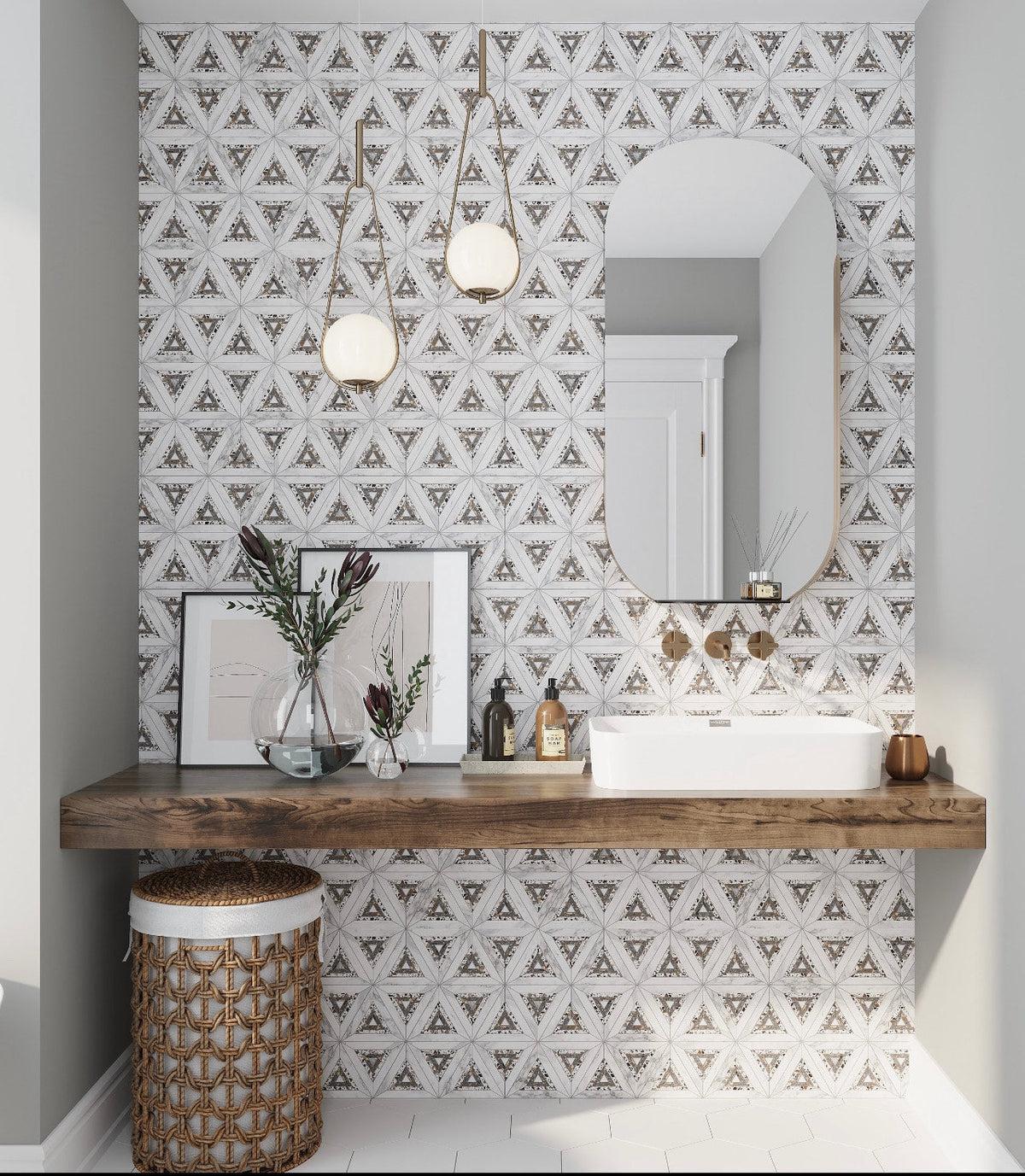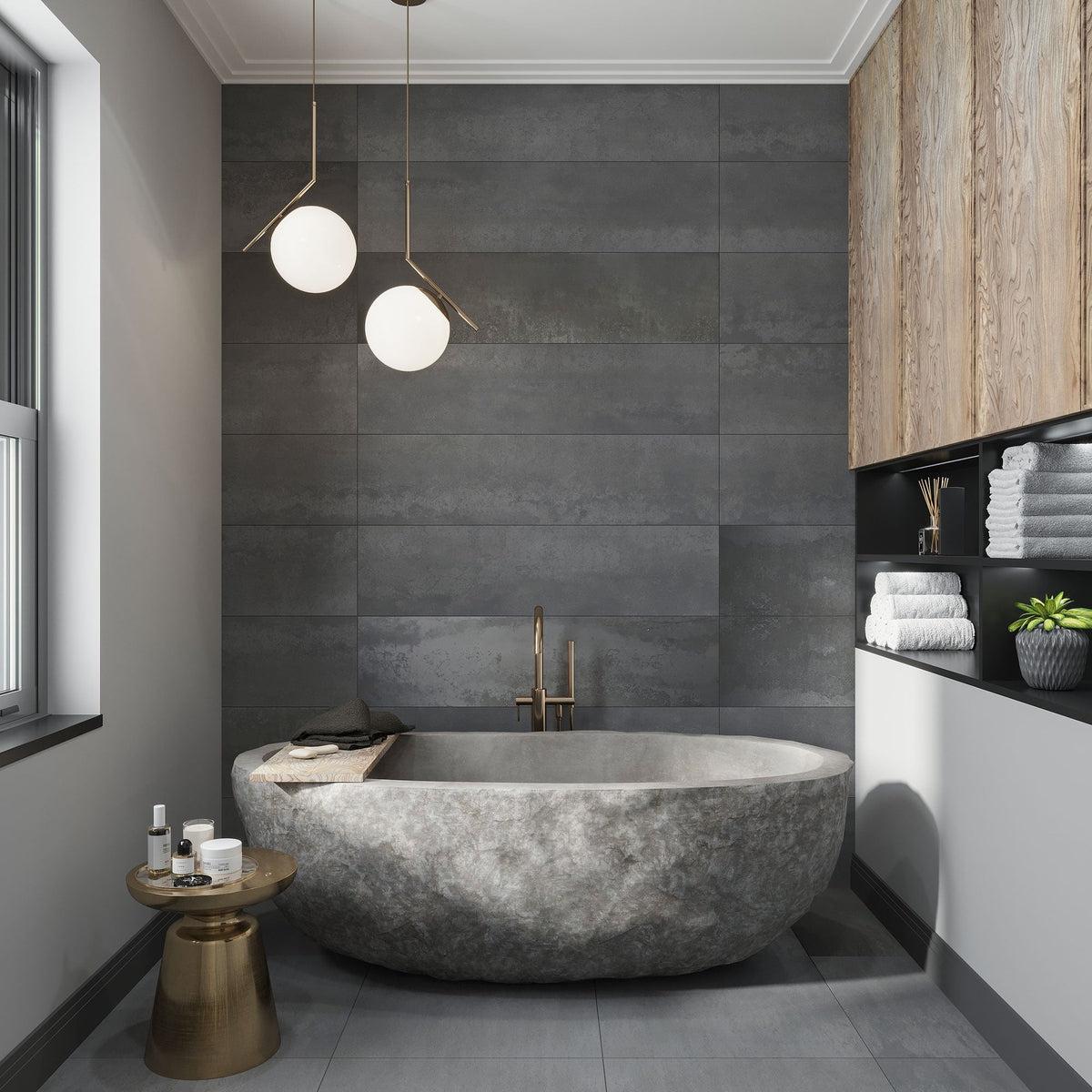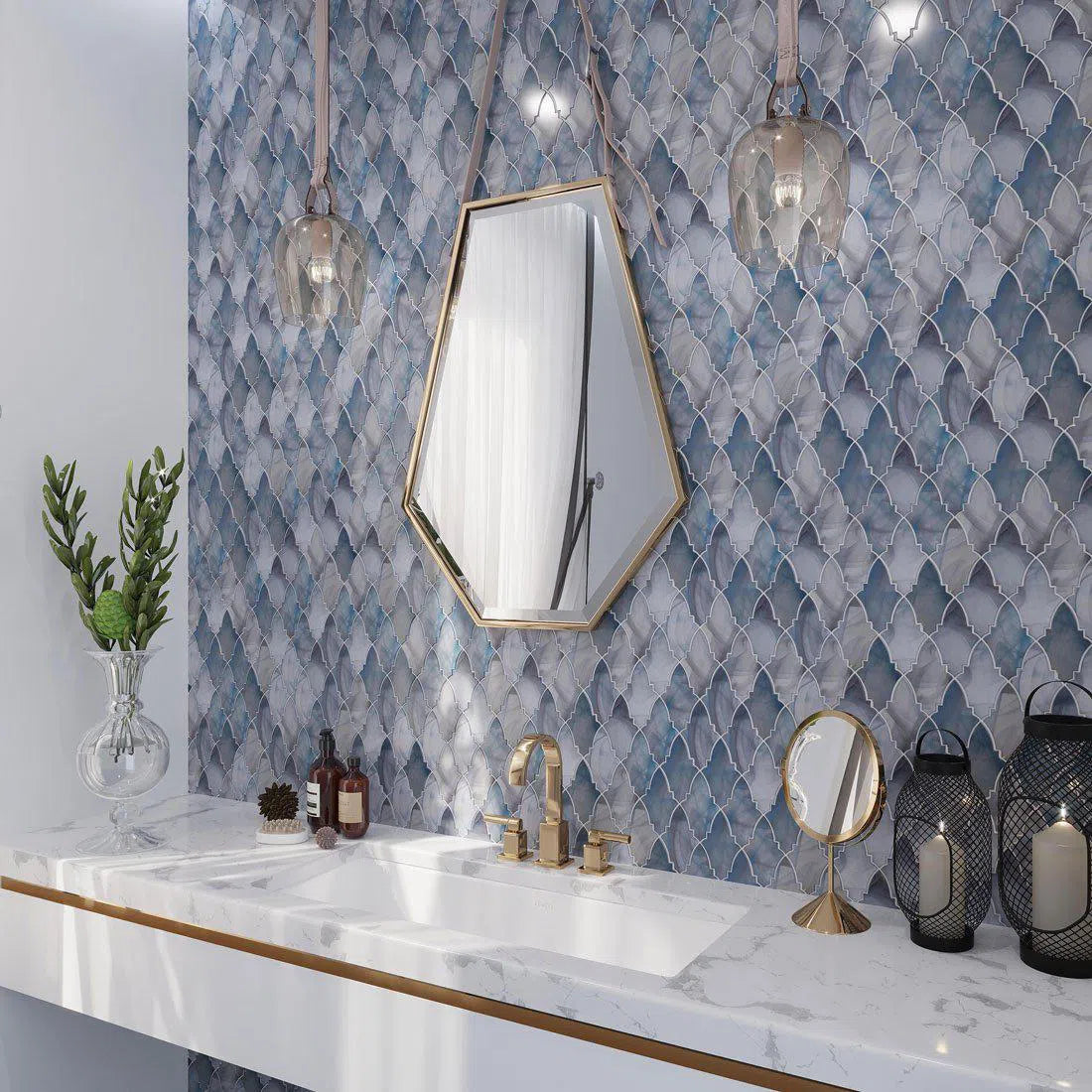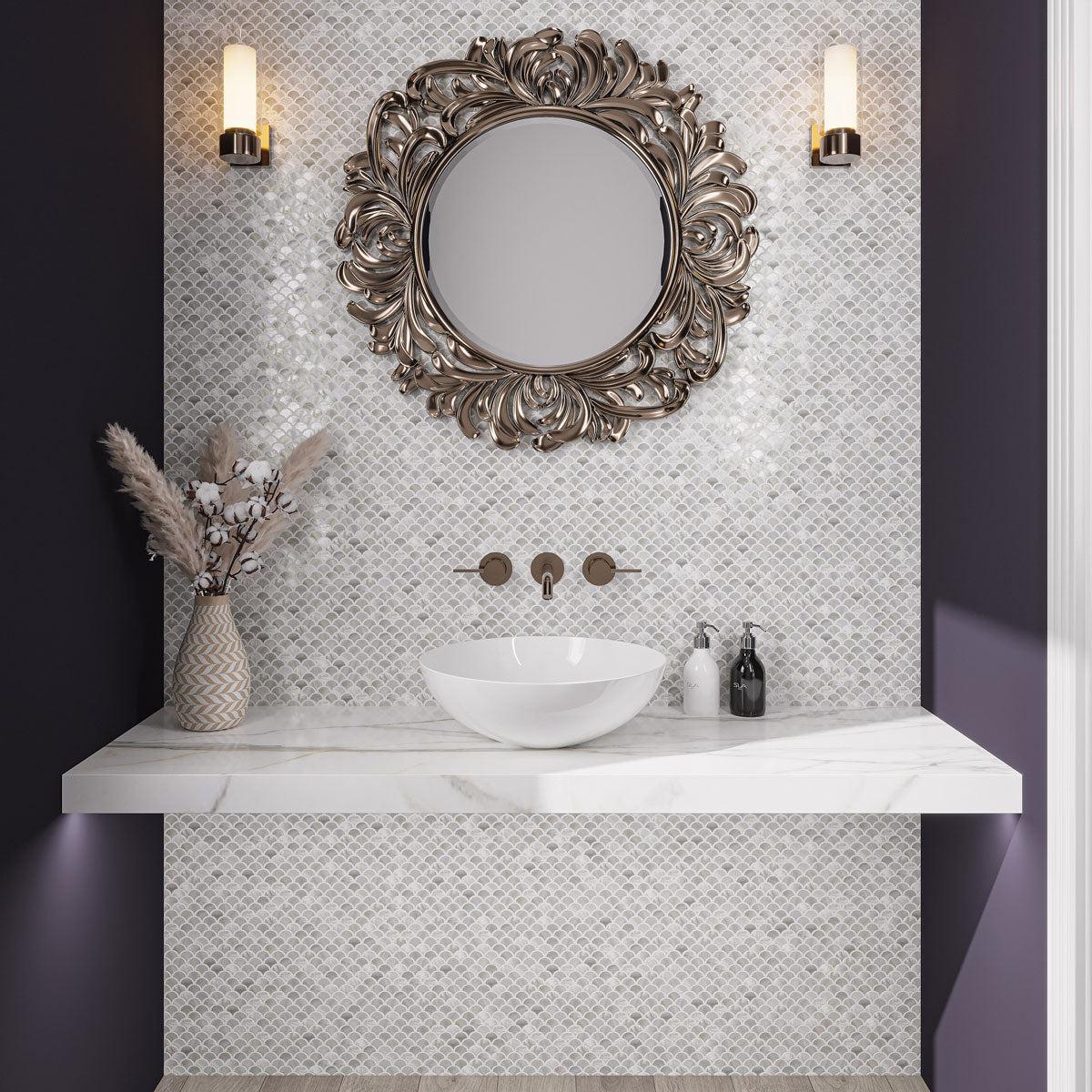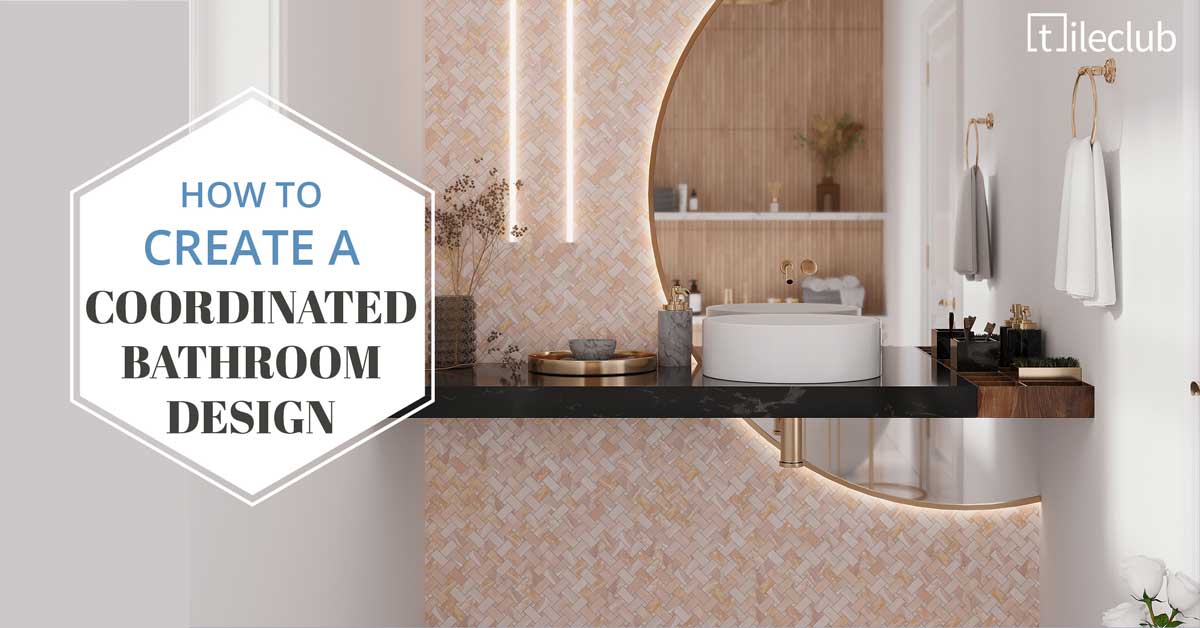
Styling Tips for a Coordinated Bathroom Design
|
|
Time to read 7 min
|
|
Time to read 7 min
Are you adding new tiles to your bathroom? If so, it's never too soon to start thinking about how tiles coordinate with bathroom elements and the rest of your home decor. Nothing exists in isolation. When matching your bathroom tiles, consider how your choices will complement and contrast other aspects of your design. For example, coordinating color schemes can unify your entire look and create a sense of continuity, whereas tasteful contrasts in tiles sizes and patterns will bring texture, depth, and character to your home.
Go for the look of marble with the convenience of porcelain, like this stunning marble-look porcelain tile for floors and walls!
Your home's interior design is a complex system that requires cooperation between multiple moving parts. Start by thinking about the big picture—determine the overall style of your home and the type of atmosphere you want to create. Then, dial in on the details and decide how you can tile your bathroom floors, walls, counter, and showers to be an essential piece of your home's comprehensive interior design plan. Looking for inspiration? Here are some ideas for matching bathroom tiles.
Choosing a bathroom color scheme is essential. Ideally, you should make this decision before starting the remodel. There are so many colors to choose from, and each one can create a different feeling in your bathroom. You'll want to choose a color scheme that complements the overall style of your home and creates the atmosphere you're looking for.
Love the look of a white shiplap wall? These porcelain wood-look tiles are water-resistant for a perfect tub surround or backsplash!
Some things to consider when choosing a bathroom color scheme:
What colors are already in your bathroom? If you have existing tiles or wallpaper, you'll want to consider those colors when choosing bathroom tiles.
What is the mood you want to create? Relaxing and calming colors like blues and greens can be great for bathrooms. That said, monochome dark colors, like black and maroon, offer depth and complexity.
Get creative with a patterned tile like this fresh and funky terrazzo mosaic for an eye-catching vanity wall!
How much natural light does your bathroom get? The amount of lighting your bathroom gets can change your tiles' appearance. Generally, ample natural light will make it appear warmer, while less natural light will produce a less intense look.
Do you want matching or contrasting colors? Matching bathroom tiles can create a sense of cohesion and unity in your home's interior design. When all the elements in your bathroom are working together, you can achieve a state-of-the-art minimalist design that’s always in style. That said, don't be afraid to experiment with contrasting colors and patterns. A perfectly executed color contrast can keep your bathroom from looking too uniform. Just be sure that the overall effect is smooth.
The perfect tile installation job is all about small details. When you're matching your bathroom tiles, you should also think about how the type and color of grout you use can play into your design.
Tone-on-tone grout can make tiles feel more seamless - like these large-format metallic porcelain pieces!
There are three most commonly used types of grout: sanded cement, unsanded cement, and epoxy. Each has a unique look that can alter the look of your tiles. Just like colors, you'll need to find the right balance between complementing and contrasting.
Sanded cement grout: Functionally, sanded cement grout is one of the best choices for bathrooms. The sanding process creates extra bonds that prevent slipping. However, this style can only be used on joints wider than 1/8 inches, so be prepared for its color and texture to be more visible than other styles.
Unsanded cement grout: This grout style is perfect for patterns that don't have a lot of space between each tile. This should be your go-to match for materials prone to scratching because it doesn't carry any abrasive substances.
Epoxy grout: Epoxy grout is the ideal choice for bathroom tiles in areas exposed to a lot of water. Its high waterproofing qualities make it perfect for showers, bathtubs, and backsplashes. A word of warning, epoxy grout can be very fickle, and installation is best handled by the pros.
Grout comes in many colors, but most homeowners choose between white, grey, and black. Grout colors may seem like an insignificant detail, but they can powerfully transform your final product.
White grout: White grout is a classic choice and adds an element of brightness to any room. Its neutral tone allows it to blend with lighter colors to let the tiles shine on their own. When paired with darker colors, white grout can establish clean lines and striking colors.
Crisp white grout pops against colorful tiles like this blue Sea Glass mosaic backsplash!
Dark grout: Black and gray grout are often used to provide a more dramatic atmosphere in bathrooms. Darker grout can also help make lighter tiles look bolder, as the contrast between each joint is less noticeable. Just be sure to watch the balance between dark and light colors so that your room doesn't appear too dark or busy.
Neutral grout: Colors like tan, beige, and eggshell white are perfect for their subtly. Whereas white and dark grouts offer stark delineations, and natural hues are better for a rustic-chic, lived-in aesthetic.
Don't forget to think about your accessories when matching bathroom tiles! When put together, all of the elements in a room should work together harmoniously. Bathroom cabinets, faucets, hardware, shower curtains, and rugs all have a role to play in formalizing the look you're going for.
Finding the perfect balance between colors and textures can be a daunting task. It helps to consult your local interior designer for guidance on how to best match your bathroom accessories and tiles. They should be able to offer insight into possible color combinations, patterns, styles, and grouts that will best bring out the beauty of your current tile installation job.
Accessorizing tile and bathroom fixtures creates a magazine-cover worthy space! We love this ornate mirror with our Mother of Pearl scale tile for a luxurious powder room.
For example, a complex tile mosaic is likely to be the focal point of any bathroom. If you choose this type of tile design, it's best to avoid choosing vibrant accessories. Towels with complicated patterns, brightly colored counters, and overly-textured bathmats might compete with the mosaic and create an overwhelming atmosphere.
Conversely, low-key tile choices, like white subway tiles with light-colored grout, are able to blend in the background and let their surroundings be the stars of the show.
Should you use the same tile design in every bathroom of your house? It depends. If the bathrooms are all of similar size and shape, then matching tile designs could be a great way to reinforce a consistent aesthetic. Designing each bathroom with the same tiles means you can outfit them with identical accessories, which saves money and makes life more convenient.
However, if the bathrooms have different purposes and layouts, you may need distinct themes for each.
When deciding how to match your tiles from bathroom to bathroom, remember that there is no right or wrong approach. The master bathroom might be best suited for upscale designs and or more intricate patterns. Guest bathrooms can be simpler and more minimalistic, while the children's bathroom may benefit from bright colors and playful patterns.
Adjoining bathrooms present fun opportunities to mix and match tiles for unique effects. On one hand, having one tile design on both sides of an adjoining bathroom can establish a relaxing sense of uniformity. On the other hand, styling the tiles differently on each side will make your adjoining bathrooms feel like two distinct spaces.
Does your bathroom border other tiled rooms in the house? If so, you can choose to match or contrast the tiles in each space.
Contrasting tile colors and patterns between rooms help delineate spaces with drastically different functions. Imagine a half bathroom that's adjacent to the kitchen. Overly matching tiles would blur the lines between the two spaces. Instead, choosing a deliberate contrast would help them feel separated.
The same color palette is essential if you want to match your bathroom tiles to adjoining spaces. This helps create a sense of cohesion and continuity between rooms. For example, matching bathroom tiles to an adjoining outdoor space can make bring the outdoors in and keep your home in touch with the latest design trends.
Tiles are a versatile design element in any bathroom. You can use them to make a statement, create visual interest, or simply coordinate with the existing color scheme. Grout colors and styles can also be used to transform your bathroom tiles. When selecting bathroom accessories, be sure to pair them with your tile selection to create a cohesive look. Finally, when matching your tile design in every bathroom, consider tying it into adjoining spaces for a pulled-together look.
Ready to find your perfect new look? Check out our collection of Bathroom Tiles to get you started!
